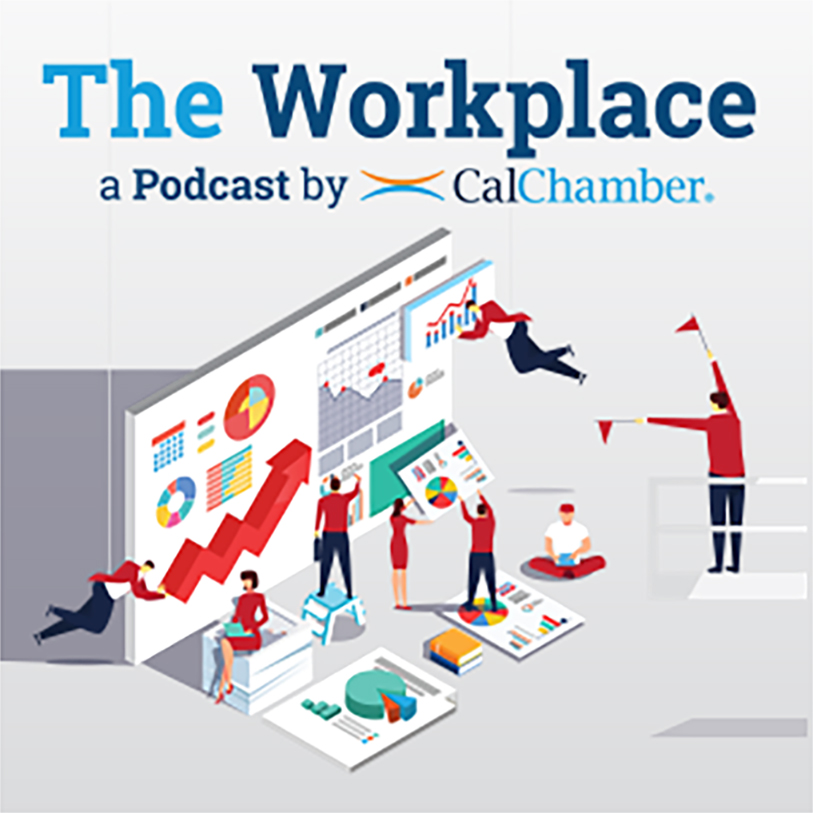In this episode of The Workplace podcast, CalChamber Labor and Employment Vice President Bianca Saad and CalChamber employment law expert Matthew Roberts discuss the rules regarding political speech in the workplace and explain California’s voting leave law.
It’s election season, and this year, Election Day is on Tuesday, November 8, Roberts says in kicking off the podcast.
The last several election cycles have felt more contentious than normal, and many people feel much more emboldened to share their political beliefs publicly. With many businesses returning their workforce back to the workplace, the work site is just another arena to see politics spill over and potentially create issues, he says.
Can Employers Express Political Views?
California employers may express their political viewpoints with their employees so long as they follow some key rules, Roberts says.
Employers may communicate with their employees, stockholders and their families about a company’s support of or opposition to state legislation. They may also, Saad says, encourage employees to support or oppose state legislation, regulations or ballot measures.
For example, the California Chamber of Commerce is urging a “no” vote on Proposition 30, and this position is something that may be shared with employees. Employees may be encouraged to oppose the ballot measure, aligning with the CalChamber.
Similarly, employers may also inform their employees, stockholders and their families about the effect that state legislation, regulations or ballot measures might have on the company, its employees and stockholders.
Saad stresses that it’s important that when communicating these political messages with employees, employers should not tell employees that this is how they should vote. The employer should simply provide employees with information, and they may do so through internal mail systems (separate from payroll distribution), email systems, regular mail, bulletin boards, phone bank messages or even employees meetings.
What Employers Cannot Do
Employers are not permitted to control or direct the political activities of employees, including threatening to discharge or terminate employment, Saad explains. Employers also cannot do anything that may be perceived as coercing employees to support or oppose a ballot measure.
“Again, this is where we make that distinction between, yes, we can share the position, we can talk about the fact that a ballot measure may impact an organization in a particular way, but we’re not actually telling the employees how to vote, nor can we reward or punish employees for their political activities, or beliefs or again, threaten to do so,” Saad stresses.
And importantly, employers should not put any political message in or on an employee’s payroll envelope. In other words, no paycheck stuffers are allowed as this could be seen as incentivizing or threatening, depending on how that employee is going to view it.
Employee Political Speech
The California Labor Code protects an employee’s right to lawful off duty activity, including lawful political activity outside of the workplace. The National Labor Relations Act (NLRA) also protects employee political speech, if it’s related to improving working conditions, such as supporting a candidate who wants to raise the minimum wage, Saad explains.
What about speech at the workplace, Roberts asks? What if there is a political discussion between two workers and the conversation escalates into a confrontation?
Saad answers that political speech on its own is not a specifically protected category in the Fair Employment and Housing Act. Employers may have neutral political speech policies that would allow an employee to exercise their rights under both Labor Code and the NLRA, but the speech may be required to be in such a way as to avoid tensions and escalations in the workplace.
Additionally, if the speech does rise to a level that might implicate the Fair Employment and Housing Act, such that it could be construed as hate speech, for example, then that is where an employer will have the ability to discipline and take more control over the situation.
This area can be very gray, and much will depend on the situation and whether the speech can be construed as hateful, offensive or creating a hostile work environment. If this is the case or an employer is unsure about the situation, Saad recommends the employer consult with legal counsel.
Attending Political Rallies
A question often presented at CalChamber HR seminars, and the CalChamber Labor Law Helpline is what an employer can do if a worker has been connected to a political rally where there was video footage of attendees holding signage or saying things that were disparaging a particular race, sex or sexual orientation.
While in this common scenario an employee is on their free time and they’re engaging in activity outside of the workplace, the activity may still impact other employees and can create a hostile work environment, Saad says. For example, a coworker may see this footage think the employee at the rally hates people who look like them or think like they do, thus creating a hostile work environment.
Again, this subject area is very tricky, so employers should consult with legal counsel on how to handle their particular situation.
Time Off to Vote
While California has a voting leave law that gives an employee time off to vote, there is a catch: An employee must be unable to vote because of the way that their shift is.
“It’s not an automatic entitlement,” Saad says.
An employee is entitled to up to two hours of paid leave to vote, but they must give their employer advanced notice of the need for the leave, she says.
Requests for this leave are not very common, especially since voting by mail is so popular, and the Voters Choice Act allows an additional number of days for an employee to vote for participating counties, Saad points out.
Still, the voting leave law requires that employers post notification of this law at least 10 days prior to the statewide election.
Lastly, an employer is allowed to decide what side of an employee’s shift the leave may be taken, such as the first part of their shift or the second half.







